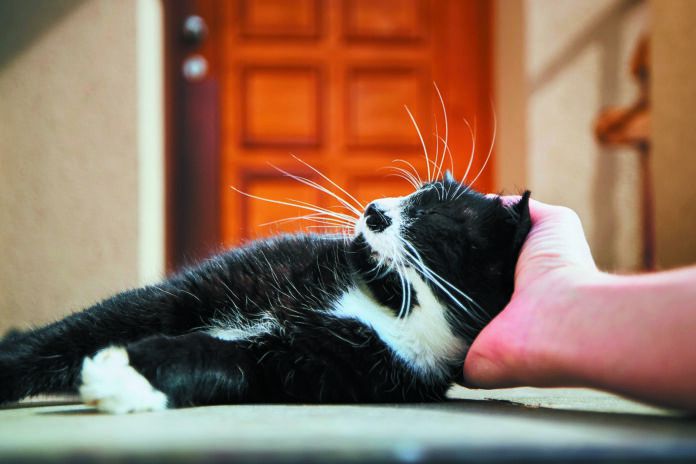Support Groups to Help Cat Owners Cope
Veterinary practices, particularly larger hospitals, have begun hiring social workers to facilitate different types of support groups for people to discuss emotional issues pertaining to their cats: chronic illness, grief over the loss — or anticipated loss — of a pet, and behavioral issues. If you would like to talk with others going through what you have been dealing with, ask your veterinarian if anyone is leading a support group in your area.
The Strength of Your Bond With
Your Cat Predicts Her Health
The more bonded you feel with your cat, the more likely you will be to take her for at least two veterinary visits each year, improving the odds of better health for her throughout her life. So suggest the results of a survey administered to more than 16,000 pet owners in eight different countries on four different continents. It was given by the Human Animal Bond Research Institute
Of those people most highly bonded to their cats, 71 percent visit the veterinarian two or more times annually, the survey showed. Among the least bonded, only 45 percent take their feline pets to the vet a minimum of twice a year.
Strongly bonded cat owners are also more likely to engage in preventive care at home: more tooth brushing, more use of flea and tick repellent medication, and more grooming.
Fortunately, bonding comes naturally and easily for most pet owners. The survey indicated that 95 percent of people consider their pet to be a part of the family. Maybe it’s because they know intuitively that the health benefits of the bond are reciprocal. Most of those surveyed recognized that the human-animal bond confers both mental and physical health advantages for people as well as for animals.
Learn Feline First Aid — in 35 Minutes
Your cat doesn’t seem right, and your veterinarian asks you to take his pulse during a Telehealth conference. Do you know how? Or can you swing into action during a breathing or cardiac emergency? Or a seizure?
You would have a better shot at stepping up to the situation if you took the Red Cross’s 35-minute First Aid Online Training. The course also offers insight on preventative care and what to do in case of bleeding and other problems that require immediate action.
It won’t turn you into a veterinarian, but when minutes count and you have to drive to the doctor’s office for professional care, the information imparted can help you stabilize your pet for the ride. Go to redcross.org and search for “Cat and Dog First Aid Online.” The course costs $25.




